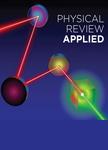版权所有:内蒙古大学图书馆 技术提供:维普资讯• 智图
内蒙古自治区呼和浩特市赛罕区大学西街235号 邮编: 010021

作者机构:Research Institute of Electrical Communication Tohoku University Sendai 980-8577 Japan Department of Computer Science and Engineering University of Aizu Aizu-Wakamatsu 965-8580 Japan Department of Electrical Engineering University at Buffalo SUNY Buffalo New York 14260 USA Department of Electrical Computer and Systems Engineering Rensselaer Polytechnic Institute Troy New York 12180 USA
出 版 物:《Physical Review Applied》 (Phys. Rev. Appl.)
年 卷 期:2023年第19卷第6期
页 面:064033-064033页
核心收录:
基 金:US Office of Scientific, (N00001435) Japan Society for the Promotion of Science, JSPS, (20K20349, 21H04546, 22KF0430) Japan Society for the Promotion of Science, JSPS Research Institute of Electrical Communication, Tohoku University, RIEC, (R04/A10) Research Institute of Electrical Communication, Tohoku University, RIEC
主 题:Optoelectronics Plasmonics Field-effect transistors Graphene Phosphorene Bolometers Terahertz techniques
摘 要:We analyze the operation of terahertz (THz) bolometric detectors based on field-effect transistor (FET) structures with graphene channels (GCs) and black-phosphorus and black-arsenic gate barrier layers (BLs). Such GC FETs use two-dimensional electron gas (2DEG) heating by the incident THz radiation leading to the thermionic emission of hot electrons from the GC via the BL into the gate. Due to the excitation of plasmonic oscillations in the GC by THz signals, the GC FET detector response can be pronouncedly resonant, leading to elevated values of the detector responsivity. The lateral thermal conductivity of the 2DEG and its Peltier cooling can markedly affect the GC FET responsivity, in particular its spectral characteristics. These effects should be considered for the optimization of GC FET detectors.